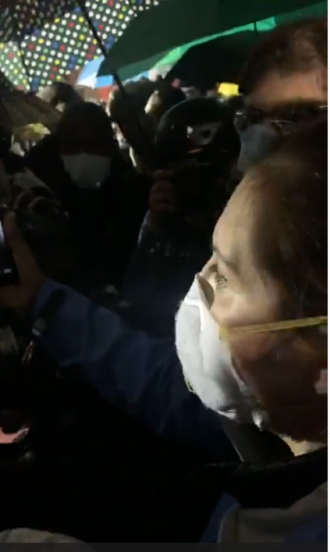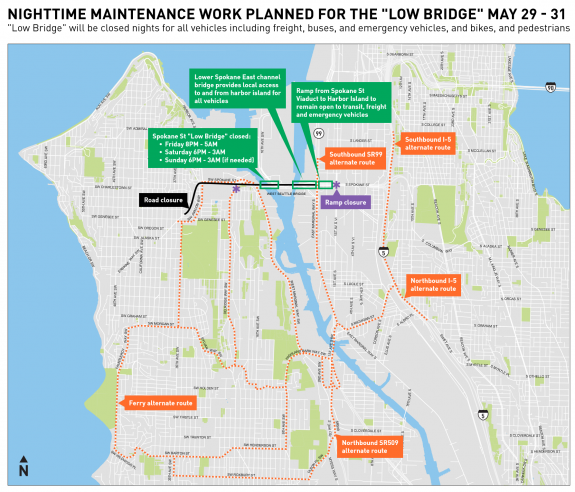EDITOR’S NOTE: Seattle Bike Blog supports the Defund Seattle Police effort initially led by a large group of community organizations and leaders, including No New Youth Jail, Decriminalize Seattle, Block the Bunker, Seattle Peoples Party, COVID-19 Mutual Aid, Trans Women of Color Solidarity Network, BAYAN, La Resistencia, PARISOL, CID Coalition, Asians for Black Lives, APICAG. View the demands and sign on here. King County Equity Now has more demands and proposals from Black-led community organizations, including specific ways to invest in Black community.

Saturday night, King County Councilmember Girmay Zahilay streamed an extraordinary live video from the front lines of the protest at 11th and Pine on Capitol Hill as he and other elected officials desperately tried to convince the Seattle Police to deescalate and stop attacking the crowd.
The police had already attacked the crowd once that evening, using violent flash-bang grenades and “I Can’t Believe It’s Not Tear Gas” on thousands of people in Seattle gathered to stand up for Black lives and call for deep change to the police department. Omari Salisbury of Converge Media filmed the police violence from the front lines, and officers hit him with a flash-bang grenade while he was trying to tell them that there was a person in a wheelchair in the area they were about to attack. Police bombed the medic station, an act of exceptional evil amid an overwhelming show of violence. The attack was a police riot, carried out seemingly to hurt people of Seattle who are critical of their violence. It was unhinged and undemocratic, the act of a police state.
After the attack, Salisbury called for elected officials to join the front line. And many answered the call. Seattle City Councilmembers Lisa Herbold, Andrew Lewis, Teresa Mosqueda and Dan Strauss joined along with State Senator Joe Nguyen and State Representative Nicole Macri. As the police took an aggressive stance, clearly preparing to attack again, King County CM Zahilay’s stream showed these leaders standing up for the protestors. At one point, Seattle Police Chief Carmen Best approached the barricade and spoke to the elected leaders face-to-face while they desperately tried to convince her to deescalate the situation and get her officers to move back and stop their attack. At first it appeared ineffective, but the police eventually stood down.
It was an extraordinary display of leadership, but it should not take a line of elected officials to stop police violence against a crowd of people. It was clear in that tense moment that Mayor Jenny Durkan either did not have control over the Police Department or she wanted them to attack. Either way, she showed that she should not be Mayor of Seattle anymore. Thankfully these other elected leaders were there to do the job she should have done.
Throughout the night, protestors chanted “Jenny Durkan must resign!” Seattle Bike Blog agrees. For the good of the City of Seattle, Mayor Durkan must resign. (more…)











